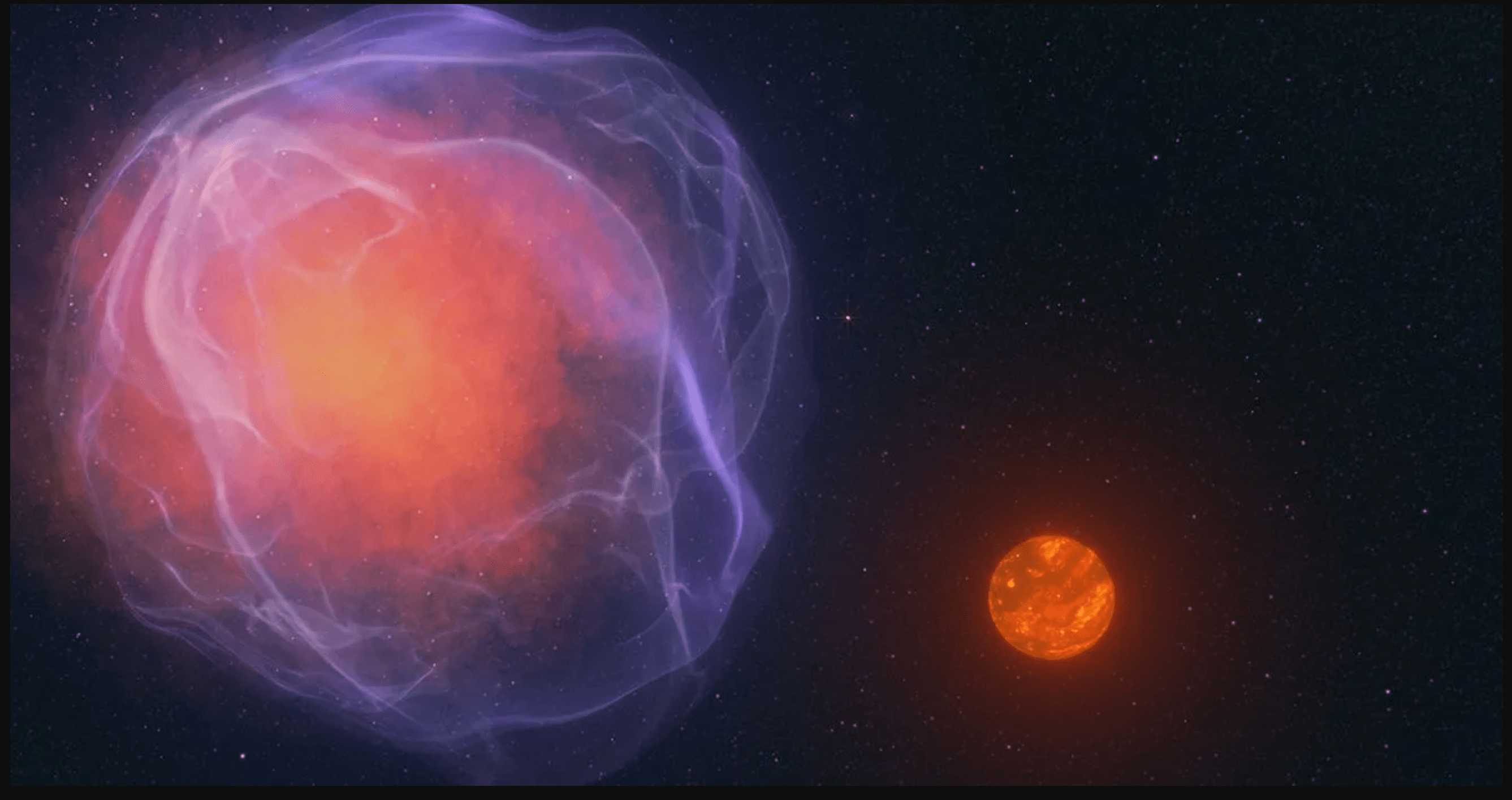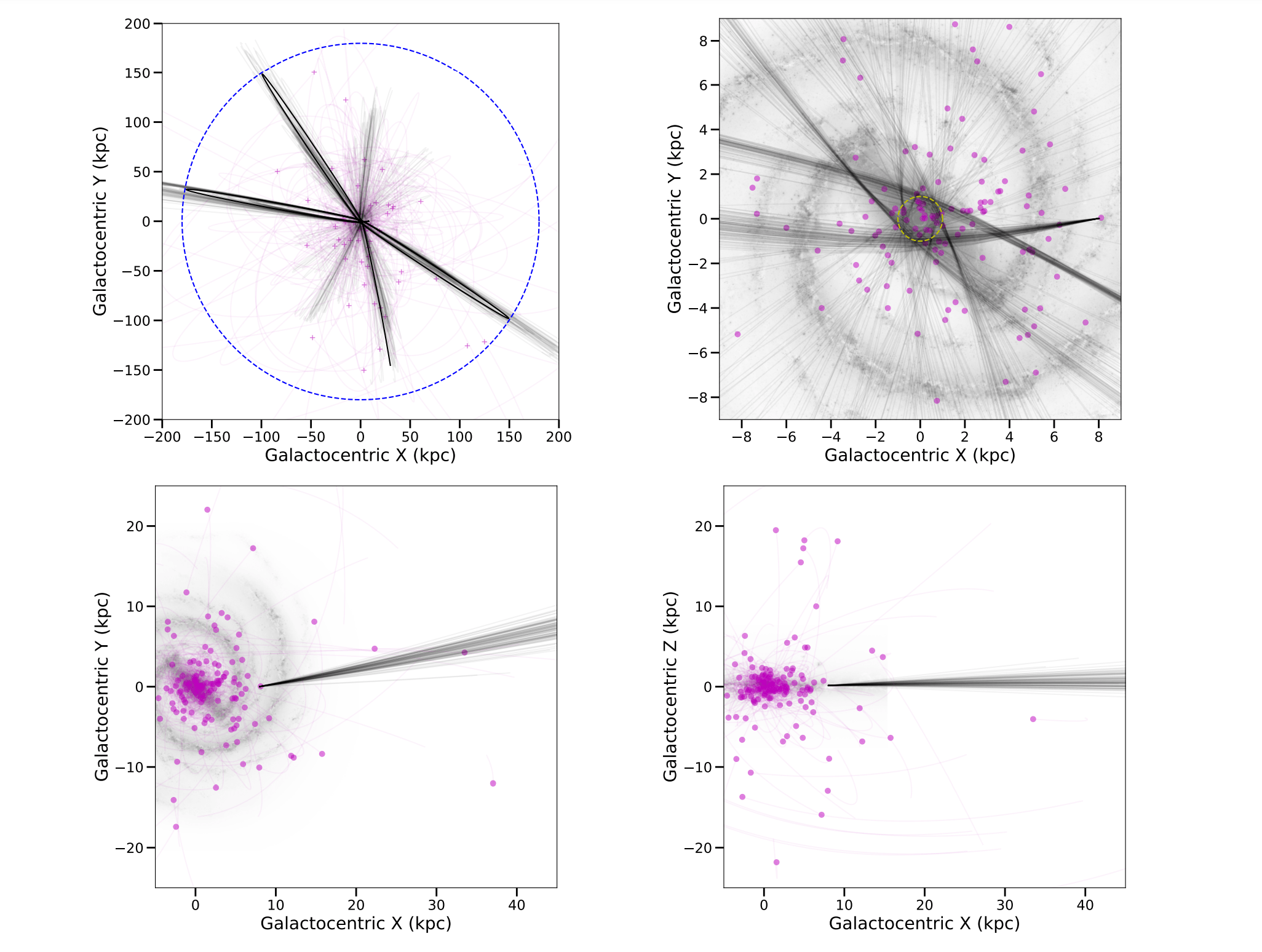The project Backyard Worlds: Planet 9 NASA is an innovative initiative that mobilizes citizen scientists around the world to discover astronomical objects. Using images captured by the Wide-field Infrared Survey Explorer (WISE), a mission that mapped the infrared sky between 2009 and 2011, participants have the opportunity to analyze the data and identify celestial phenomena that might otherwise go unnoticed by traditional automated analysis methods.
Since its reactivation as NEOWISE in 2013, the mission has focused on discovering near-Earth objects, but it also continues to provide valuable data for exploring the distant universe. NEOWISE’s recent retirement on August 8, 2024, marks the end of an era, but the legacy of its discoveries lives on, not least through the continued work of dedicated citizen scientists.
Among the most notable discoveries facilitated by this project is the object named CWISE J124909.08+362116.0. Identified by experienced citizen scientists Martin Kabatnik, Thomas P. Pickle, and Dan Casselden, this object is notable not only for its incredible speed, but also for its unique physical properties. The discovery was later confirmed by additional observations made with several ground-based telescopes, further cementing its importance in astrophysics.
Citizen scientists participate in projects such as: Backyard Worlds: Planet 9 It embodies the democratization of science, allowing individuals without formal academic training in astronomy to make significant contributions to the advancement of scientific knowledge. This collaborative model not only expands data analysis capabilities, but also engages the general public in exploring the universe, fostering a deeper interest in science and discovery.
The identification of CWISE J124909.08+362116.0, an object moving so fast that it will eventually escape the Milky Way’s gravity, demonstrates the potential of citizen science initiatives. With a mass similar to or less than that of a small star, this object challenges traditional classifications of celestial objects, lying on the border between a brown dwarf and a gas giant planet. The discovery of this object not only expands our understanding of the diversity of celestial objects, but also raises new questions about the dynamics and evolution of our galaxy.
The project in brief Backyard Worlds: Planet 9 The discovery of CWISE J124909.08+362116.0 underscores the importance of collaboration between professional and citizen scientists. This synergy not only enriches the field of astronomy, but also inspires a new generation of cosmic explorers, demonstrating that curiosity and dedication can transcend barriers and lead to extraordinary discoveries.
The object, named CWISE J124909.08+362116.0, hereafter referred to as CWISE J1249, is a remarkable discovery in astronomy. The object was identified by citizen scientists participating in the project. Backyard Worlds: Planet 9Using images from NASA’s Wide-field Infrared Survey Explorer (WISE), the discovery of CWISE J1249 is of particular interest because of its unusual speed and unique physical properties.
CWISE J1249 is moving at an astonishing speed of about 1 million miles per hour, a speed that would allow it to escape the Milky Way’s gravity and enter intergalactic space. This phenomenon is rare and noteworthy, as most stars and celestial objects orbit peacefully around the center of our galaxy. CWISE J1249’s trajectory suggests that it is on a unique and unique journey, and stands out among the known objects.
In addition to its speed, CWISE J1249 has a relatively low mass, which further complicates its classification. It could be a low-mass star, or if it is not continuously fusing hydrogen in its core, it could be considered a brown dwarf. Brown dwarfs are substellar objects that occupy a position intermediate between gas giant planets and stars, and are relatively common. However, CWISE J1249’s uniqueness lies in the fact that it is the first such object known to be in the process of leaving the galaxy.
Another interesting aspect of CWISE J1249 is its elemental composition. Data obtained from the WM Keck Observatory on Maunakea, Hawaii, revealed that it has much less iron and other metals than other stars and brown dwarfs. This composition suggests that CWISE J1249 is an ancient object, probably originating from one of the first generations of stars to form in the Milky Way. The low metallicity is an indication that it formed at a time when the universe was less rich in heavy elements, providing valuable clues about the early history of our galaxy.
The discovery of CWISE J1249 was confirmed by follow-up observations using multiple ground-based telescopes, allowing scientists to more accurately characterize its properties. This collaborative process involved not only professional scientists but also dedicated volunteers, demonstrating the power of citizen science to contribute to significant advances in astronomy. The combination of extreme velocity, low mass, and unique elemental composition makes CWISE J1249 a subject of great interest for future research and detailed study.
With its incredible speed of about 1 million miles per hour, CWISE J124909.08+362116.0 raises interesting questions about its origin and the mechanisms that could drive such motion. One of the most widely discussed hypotheses among scientists is that the object may have formed in a binary system containing a white dwarf. In this scenario, the white dwarf would have gathered material from its companion star until it reached a critical point, causing a supernova explosion. The force of this explosion would have been enough to eject CWISE J1249 from the binary system at extreme speeds, launching it out of the Milky Way.
Another fascinating hypothesis suggests that CWISE J1249 may have originated in a globular cluster, a densely populated collection of stars. Within these clusters, gravitational interactions are complex and intense. A close encounter with a pair of black holes could have led to a three-body interaction, in which the gravitational dynamics could have flung CWISE J1249 out of the cluster at tremendous speed. This type of event, although rare, is supported by theoretical models of stellar dynamics and could explain the observed trajectory of the object.
The elemental composition of CWISE J1249 also provides valuable clues about its history. Observations made with the W. M. Keck Observatory on Maunakea, Hawaii, revealed that the object contains much less iron and other metals than typical stars and brown dwarfs. This low metallicity suggests that CWISE J1249 is very old, and probably belongs to one of the first generations of stars to form in our galaxy. A detailed analysis of its composition could help distinguish between origin hypotheses by providing a window into the processes that occurred in the early stages of the Milky Way’s formation.
The implications of this discovery are vast. Understanding the origin and trajectory of CWISE J1249 not only enriches our knowledge of stellar dynamics and gravitational interactions, but also provides insights into the chemical evolution of our galaxy. The presence of such an ancient and fast-moving object suggests that violent and dynamic events played an important role in the history of the Milky Way. Furthermore, this study highlights the importance of collaboration between citizen scientists and professionals, demonstrating that citizen science can contribute significantly to advances in complex fields such as astrophysics.
The discovery of CWISE J124909.08+362116.0 is a striking example of the significant impact that citizen scientists can have on astronomical research. This project, Backyard Worlds: Planet 9, is a testament to the synergy between passionate amateurs and seasoned professionals, demonstrating that citizen science is not only a valuable tool, but also a bridge that connects people of different backgrounds and levels of knowledge toward a common goal.
Citizen scientists Martin Kabatnik, Thomas B. Pickle, and Dan Casselden played a crucial role in the initial identification of the object, using data from NASA’s Wide-field Infrared Survey Explorer (WISE). The collaboration did not stop there; the discovery was later confirmed and described through observations using ground-based telescopes, involving a network of specialists and students. This collaborative effort culminated in the publication of a study in the prestigious journal Astrophysical Journal Letterswith citizen scientists listed as co-authors, a well-deserved recognition of their significant contribution.
Backyard Worlds: The Planet 9 Project not only facilitates the discovery of new astronomical objects, but also serves as an educational platform, inspiring and empowering individuals to actively participate in scientific research. Another citizen scientist, Melina Thevenot, embodies this collaborative spirit through her personal blog, where she shares research techniques using the Astronomical Data Query Language (ADQL). Furthermore, software developed by Frank Kiwi was instrumental in the identification of CWISE J1249, demonstrating how technical skills can be applied in innovative ways in astronomy.
Collaborations between volunteers, professionals, and students not only enrich scientific research, but also foster a sense of community and shared purpose. Hunter Brooks and Austin Rothermich, co-authors of the study and astronomy students, began their careers as citizen scientists, demonstrating how these initiatives can serve as springboards for future scientific careers.
For those interested in contributing to the next great discovery, the Backyard Worlds: Planet 9 project remains open to global participation. Anyone, regardless of geographic location or academic background, can join this vibrant community and help unlock the secrets of the universe. Participation in projects like this not only expands our collective knowledge, but also democratizes science, making it accessible and inclusive.
In conclusion, citizen science represents a promising future for astronomical research. The discovery of CWISE J1249 is just one example of what can be achieved when curious and dedicated minds come together. As we continue to explore the far reaches of the universe, collaboration between citizen and professional scientists will undoubtedly be a driving force in expanding our understanding of the cosmos.
source:

“Incurable thinker. Food aficionado. Subtly charming alcohol scholar. Pop culture advocate.”


![[VÍDEO] Elton John’s final show in the UK has the crowd moving](https://www.tupi.fm/wp-content/uploads/2023/06/Elton-John-1-690x600.jpg)





More Stories
What ChatGPT knows about you is scary
The return of NFT? Champions Tactics is released by Ubisoft
What does Meta want from the “blue circle AI” in WhatsApp chats?